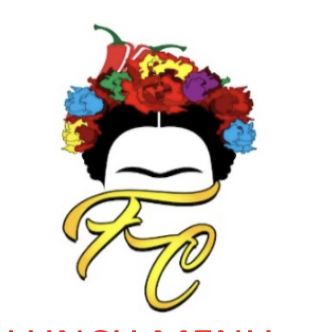Modern Mexican Cuisine: Honoring Tradition While Embracing Innovation
Traditional Mexican cuisine stands at a fascinating crossroads where ancient culinary wisdom meets contemporary innovation. As modern Mexican cuisine continues to evolve globally, chefs and food-preservationists are working tirelessly to balance authenticity with adaptation, ensuring that preserving traditional recipes remains paramount while embracing the natural progression of Mexican food evolution.
The Evolution of Mexican Cuisine in Contemporary Times
From Street Stalls to Fine Dining
Mexican food has always reflected fusion: indigenous techniques blended with Spanish and other influences. Today’s evolution builds on that foundation while introducing new methods and presentations. Modern taquerias, once simple roadside stands, now feature heirloom-corn tortillas, locally sourced meats, and plant-based fillings. Street staples such as tacos, tlacoyos, and tamales are appearing on fine-dining menus with gourmet ingredients and sophisticated plating, proving that humble dishes can be honored even while meeting contemporary expectations.
Regional Cuisine Recognition
Global diners increasingly seek specific regional experiences—from the complex moles of Oaxaca to the seafood plates of Baja California and the Mayan flavors of Yucatán. Mexico’s “Pueblos Mágicos” (Magic Towns) have become culinary destinations, showcasing the country’s diversity. Market analysts project the Mexican food sector to expand by more than 113 billion dollars through 2026, with North America driving more than half of that growth, underscoring worldwide demand for regionally authentic fare.
Fusion and Contemporary Adaptations
Global Fusion Movements
Chefs worldwide are combining Mexican techniques with other culinary traditions. Korean-Mexican mashups such as kimchi-topped barbecue tacos, Japanese-Mexican sushi rolls wrapped in spicy mole, and even Ethiopian-Mexican stews served with tortillas illustrate how new flavors can gain a permanent place in the canon—just as tacos al pastor once evolved from Lebanese shawarma.
Modern Cooking Techniques
Contemporary kitchens merge ancestral skills with cutting-edge technology. In Mérida, Chef Pedro Evia uses molecular gastronomy to reinterpret classic Yucatecan dishes, while many chefs are reviving nixtamalization—cooking corn with lime water—to elevate nutrition and flavor. High-tech tools coexist with the traditional comal, molcajete, and metate, forging a bridge between past and future.
Cultural Preservation Efforts
UNESCO Recognition and Its Impact
In 2010 UNESCO named traditional Mexican cuisine an Intangible Cultural Heritage of Humanity, spotlighting Michoacán’s food culture as emblematic of national identity. The designation galvanized efforts to document age-old farming, ritual, and cooking customs and to keep them vibrant in modern kitchens.
Documentation and Educational Initiatives
Foundations, universities, and community groups are recording recipes once transmitted only orally. Culinary apprenticeships pair veteran cocineras tradicionales with young cooks, ensuring that skills such as grinding chiles on a metate or slow-cooking barbacoa in underground pits survive for generations.
Supporting Indigenous Communities
Programs like Slow Food Mexico champion heirloom varieties of corn, beans, and chiles, providing technical aid and market access to indigenous farmers. By paying fair prices for native crops, chefs and consumers help sustain both biodiversity and cultural heritage.
Sustainability and Environmental Consciousness
Modern Sustainability Practices
Many restaurants now emphasize zero-waste kitchens, local sourcing, and biodegradable packaging. Mexico’s avocado growers, for example, have launched a nationwide initiative promoting water conservation, biodiversity, and net-zero deforestation.
Street Food as Sustainable Dining
Researchers at UNAM note that street vendors make up more than half of food outlets in Mexico City, supplying affordable, nutrient-dense staples like tlacoyos, esquites, and tacos. These small businesses rely on local ingredients and minimal packaging, making them vital to urban food security and culinary preservation.
Technology Integration and Social Media
Digital Preservation and Education
Chefs such as Carlos Gaytán use social media to teach global audiences about traditional flavors and techniques, turning platforms into virtual classrooms and marketing tools. Videos of tortilla-making or mole preparation reach millions, inspiring home cooks to try authentic methods.
Innovation in Traditional Techniques
Even with induction burners and sous-vide baths, many chefs still grind spices in stone mortars or shape tortillas by hand. Technology serves to streamline prep work and expand reach, not to replace cultural touchstones.
Contemporary Chef Innovations
Leading Innovators
Enrique Olvera’s Mole Madre, aged for years in his Mexico City restaurant Pujol, epitomizes the union of patience, scholarship, and experimentation. In Ciudad Juárez, rising chefs such as Bricia Romero and David Rodríguez draw on travel and local history to rebuild their city’s culinary identity, proving that innovation can coexist with deep roots.
Sustainable Innovation
Chefs who mill their own heirloom corn, ferment local produce, and collaborate with nearby farms demonstrate that sustainability and authenticity reinforce each other. Diners benefit from superior flavor while small producers enjoy stable demand.
Actionable Tips for Preserving and Celebrating Mexican Culinary Heritage
For Home Cooks
1. Learn traditional tools: invest in a molcajete and a comal.
2. Source authentic ingredients: seek dried chiles, masa harina, and Mexican cheeses.
3. Try nixtamalization: make masa from whole corn to understand the cornerstone of many dishes.
4. Document family recipes: write down techniques and stories before they disappear.
5. Support Mexican producers: buy products grown or crafted by indigenous communities.
For Restaurant Owners and Chefs
1. Highlight regional specificity instead of generic “Mexican” labels.
2. Train staff in traditional methods and cultural context.
3. Educate diners on social media, sharing the origins of each dish.
4. Source directly from local and indigenous suppliers.
5. Balance creativity with respect for core flavors and techniques.
For Food Enthusiasts
1. Seek restaurants that specialize in regional Mexican cuisines.
2. Learn the distinctions between Oaxacan, Pueblan, and Yucatecan dishes.
3. Choose businesses that actively preserve culinary heritage.
4. Engage with Mexico’s broader culture—history, language, and festivals—to deepen appreciation.
5. Share accurate information to combat stereotypes and promote authentic foodways.
The Future of Mexican Culinary Heritage
Emerging Trends
Expect greater regional focus, continued plant-based innovation, and broader use of indigenous ingredients such as quelites and chilhuacle chiles. Interest in specialty peppers and Oaxacan cuisine is poised to grow further.
Challenges and Opportunities
Global popularity invites dilution, but it also offers economic incentives to safeguard authenticity. With UNESCO recognition, culinary scholarships, and consumer demand for genuine experiences, preserving traditional recipes is both culturally vital and commercially viable.
Conclusion
Mexican cuisine is evolving, not eroding. Through conscientious chefs, empowered communities, and curious diners, modern Mexican food honors its roots while exploring new horizons. By documenting ancestral knowledge, supporting indigenous producers, and embracing thoughtful innovation, today’s culinary leaders ensure that Mexico’s rich gastronomic heritage remains vibrant for generations to come.

